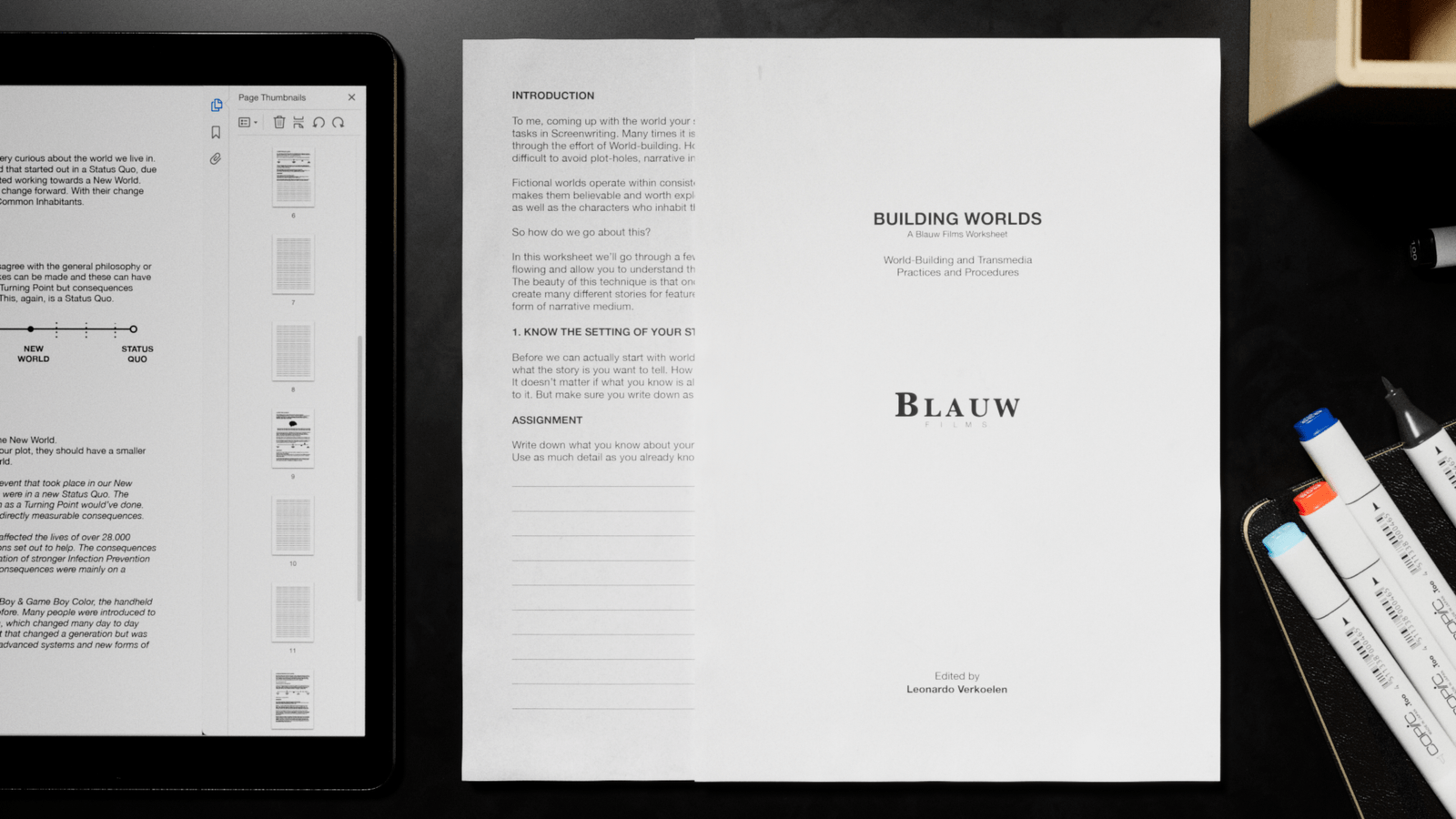Essential Steps to World-Building for Beginners
Introduction to Macro-Storytelling
Blauw Films

Building Worlds is a PDF worksheet for writers and creators looking to create their own worlds and stories. Here are 5 simple steps one can follow in order to create a cohesive and interesting story.
1. Define the Status Quo
Status Quo are a British rock band founded in London in 1962 by Francis Rossi and Alan Lancaster. The band came to prominence when... what’s that? Not that Status Quo?
Apologies...
The status quo, (not the rock band), is the foundation of your narrative. It's the existing state of affairs in your world, the backdrop against which your characters will rebel against, run from, or even fight to maintain.
Understanding and clearly establishing this status quo is crucial in crafting a compelling story. It provides the context for the story to come. It is the earth in which your characterswill plant the seeds of change.
And after all, stories are fundamentally about change.
2. Define the Turning Point
So how do things change? What happened to break the status quo?
Narratively speaking these moments of change are known as turning points.
Your narrative should be made up of many turning points. Each scene should contain at least one turning point on a micro level that drives the narrative forward, but on the macro level, your story should contain significant plot points that drive the narrative forward. The first (and arguably most significant) being the inciting incident, a moment of change in the first act that breaks the status quo and changes the course of direction for your characters and your world.
3. Define the Major Players
Sure, you can bowl over your audience with an epic world filled with fantastical creatures and political intrigue, but that’s not why your audience are here. They’re here to be told a story and at the heart of it all lies your characters. They're the stars of the show, the ones we root for, love, or even hate. By fleshing out their lives, what they do, where they live, whom they love, you not only breathe life into your world but also provide a lens through which the audience can view the status quo in all its glory.
4. Define their Philosophy
What makes your characters tick? What do they believe in? How do those beliefs shape the world around them, or how does the world around them shape those beliefs?
Are they the products of the status quo, or are they rebels ready to challenge the societal norms? Dive deep into the philosophy of your characters and the broader population of your world. Even if you don’t use everything in your story, understanding it deeply yourself will lead to richer more compelling characters, and therefore a richer more compelling world, and finally, and most importantly, a richer more compelling story.
5. How does this affect the events that followed?
Once the status quo is shattered and we dive into the meat and veg of the story how do your character’s core beliefs effect the trajectory and steer the course of the events to come? Every decision, every action, becomes a reflection of your characters' innermost beliefs, with the now broken status quo the touchstone highlighting the extent of development and change.
Examples
The status quo could describe an infinite number of scenarios:
In a world ruled by a dastardly dictator, the status quo is a reign of fear and oppression. But when the dictator suddenly dies the stage is set for a battle of succession that will shape the fate of the world.
In a barren desert, long scorched by the sun, the status quo is one of utter desolation. But when rain finally falls and new life blooms, a fight for resources begins.
The status quo could be more internal or personal: A depressed, eternally single man has given up the chance of ever finding love, but when he takes up Kintsugi and love comes knocking in the shape of a woman called Hope, together they rebuild the broken pieces of his heart (apologies for the cheese).
The status quo is in the crucible of normality where your story is shaped, the canvas where you paint your tale, and the paint? ... Your characters, their core beliefs, and their hearts desires. Happy painting!








.jpg)

.jpg)





















































































.jpg)






.png)




0 Comments